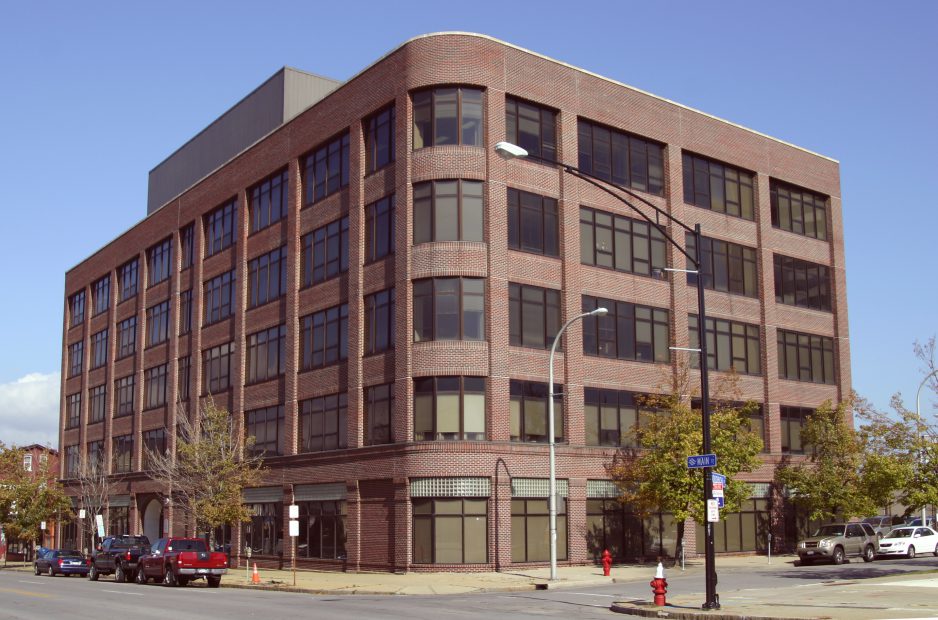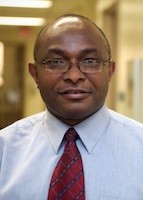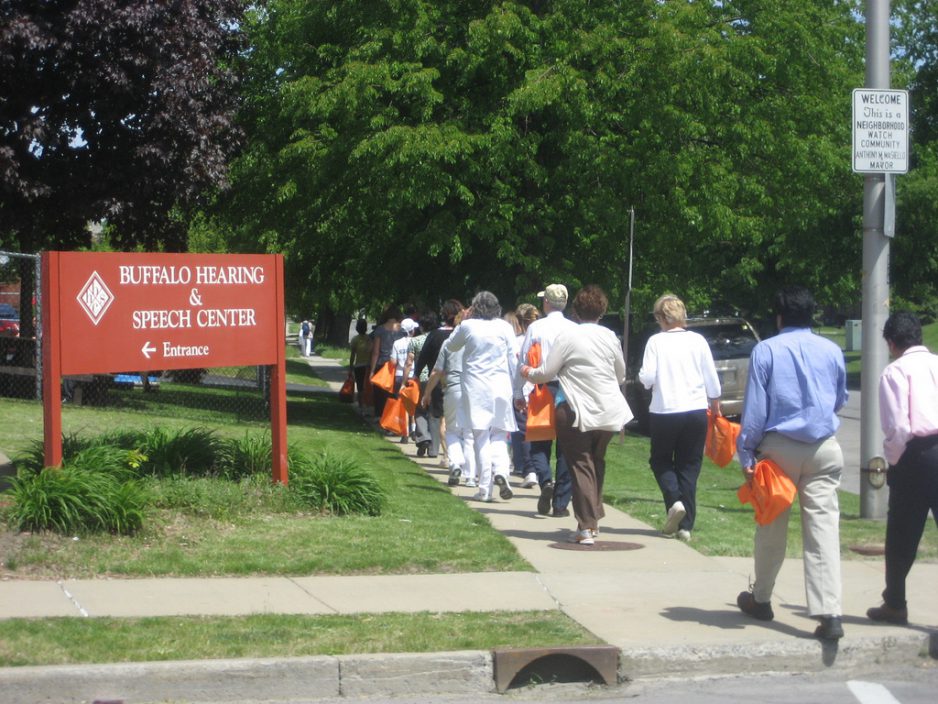Free wellness event and walk are sponsored by Patient Voices Network, a network of patient action teams, established by UB Family Medicine and Jericho Road Ministries
A free breast cancer awareness walk and wellness event will be held Saturday, October 13 at 10 a.m. in Masten Park by the Patient Voices Network. The network is a patient empowerment partnership between the University at Buffalo Department of Family Medicine, and patients from UBMD Family Medicine at Jefferson and Jericho Road Family Practice.
The 1.6 mile walk will start at 10 a.m. at the Best Street entrance to Masten Park, with registration starting at 8:30 a.m. The wellness event begins at 11 a.m. in Masten Park. Health care providers will be available to talk to participants and there will also be information on breast health, breast cancer and screening. Healthy snacks and free T-shirts will be distributed.
On-site screening mammograms will be available for women who have a prescription and who pre-register by calling WNY Breast Health at 1-855-464-7465, prior to the event. Free services through the Cancer Services Program are available for the uninsured. Those who are unable to get screened on Oct. 13 will be provided with an wp-contentointment for another day.
The idea for the event originated with members of the Patient Voices Network, which was formed by the UB Primary Care Research Institute of the Department of Family Medicine and Jericho Road Ministries. In the network, patients living with chronic illness work together to improve primary care and to boost the rate of cancer screenings at the network’s practice partners, Jericho Road Family Practice and UBMD Family Medicine at Jefferson, which is operated by the UB Department of Family Medicine.
“We were talking about how everyone knows what the pink ribbon means, but to really reach people on Buffalo’s East Side, we would need to put on an event right in the community,” says Laurene Tumiel-Berhalter, PhD, associate professor of family medicine and director of community translational research at the Primary Care Research Institute in UB’s School of Medicine and Biomedical Sciences. “We started talking about walking right down Jefferson Avenue, bringing people out of their homes to join us and to get screened for breast cancer.”
According to Tumiel-Berhalter, patients and providers were committed to making sure that both the walk and the event be free in order to ensure the highest possible participation rate. Those who want to donate to breast cancer research will be able to do so; gift bags for participants will include information on how to donate.
“This is not a fundraiser,” she stresses. “This is an event we are holding to educate people on the East Side about breast cancer and to screen them for it.”
The free walk and event are being made possible by grants to the Patient Voices Network from the Western New York Affiliate of Susan G. Komen for the Cure and from the New York State Division of Science, Technology and Innovation (NYSTAR).
During the event, women who have pre-registered will be screened at the WNY Breast Health’s Mobile Mammography Unit, which will be stationed in Masten Park. Additional screenings will take place on Oct. 18, when the unit will be stationed in front of UBMD Family Medicine at Jefferson and UBMD Gynecology Obstetrics, 1315 Jefferson Ave. in Buffalo.
Throughout the rest of the fall, women will have additional opportunities to receive mammograms. The unit will be stationed at Jericho Road Family Practice, 184 Barton St., Buffalo, on the fourth Tuesday of every month and at Jericho Road Family Practice, 1609 Genesee St. on the third Tuesday of every month. To pre-register, call 1-855-464-7465.
“By stationing the mammography machines in such convenient and visible locations, we hope that as many people as possible in the community will get screened,” says Tumiel-Berhalter.
If a screening indicates that further tests are necessary, patients will be referred to an wp-contentropriate health care provider if they do not already have one.
The need for breast cancer education in minority communities is urgent, says Tumiel-Berhalter, because:
–Among African-American women, breast cancer is the most common cancer and the second most common cause of death;
–African-American women have a higher incidence rate of breast cancer before age 40 and are more likely to die from it at every age than are non-Hispanic, white women;
–While mortality rates decreased for white breast cancer patients from 1975 to 2003, they actually increased for African-American women.
The Patient Voices Network began with a grant Tumiel-Berhalter received from the National Center for Minority Health and Health Disparities, part of the National Institutes of Health. She used the grant to develop an organization in which patients could promote ways to improve primary care in their community by helping one another. The response from patients was so enthusiastic that the group, which began meeting monthly, now meets on a weekly basis. The network provides education and assistance in the community for patients with diabetes and, with Roswell Park Cancer Institute, has promoted colorectal cancer events and screenings. More information on the network is here: http://www.fammed.buffalo.edu/patientvoices.
Ellen Goldbaum (UB); goldbaum@buffalo.edu; 716.645.4605; @egoldbaum































